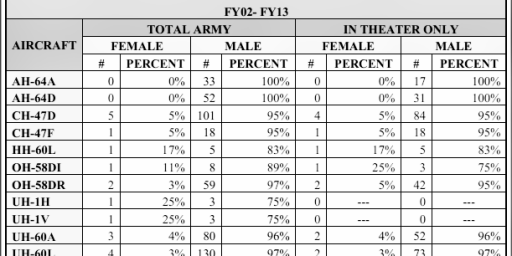100 American Women Dead in Iraq
The death July 17 of Tech Sergeant Jackie Larson, of natural causes, brought to one hundred the number of American female military personnel who have died in the Iraq War, CNN reports.
The death of an Air Force technical sergeant in Iraq last week quietly brought a somber milestone: One hundred American female service members have died in Iraq, according to a CNN count of Pentagon figures.
The latest death was Tech. Sgt. Jackie L. Larsen, 37, of Tacoma, Washington, who died of natural causes July 17 at Balad Air Base, Iraq. She was assigned to the 9th Reconnaissance Wing, Beale Air Force Base, California, according to the Pentagon.
The death comes during what may be the lowest monthly toll in the war. Pentagon records show that at least nine U.S. troops have died in July. The lowest number in the war was in May, with 19. The total of U.S. service member deaths in the Iraq war now stands at 4,124.
Of the 100 female service members who died:
- 97 were troops, and three were military civilian employees.
- 61 of them have been classified as hostile — occurring during combat or enemy attacks — and 39 have been non-hostile.
- 12 died in 2003, 19 in 2004, 20 in 2005, 15 in 2006, 27 in 2007 and seven this year.
- 80 of those were members of the Army, nine were Navy, seven were Marines, and four were Air Force.
To put the number in context, that’s 100 women out of 4082 Americans dead in Iraq, or slightly under 2.5 percent of the total. Thus, men account for 97.5 percent of the deaths. And more than a third (39 percent, to be precise) of the women who have died did so from causes other than hostile action.
What’s truly remarkable, though, is that these numbers are spectacularly higher on a percentage basis than in previous conflicts:
- World War I: At least 359 servicewomen died, mostly from influenza and vehicle and aircraft accidents.
- World War II: 543 died, mostly from vehicle and aircraft accidents. Sixteen Army nurses died from enemy fire.
- Korean War: 17 died, mostly from vehicle or aircraft accidents.
- Vietnam War: 8 died, one from hostile fire, one suicide, and the rest from vehicle and aircraft accidents.
- Gulf War (Operations Desert Shield and Desert Storm): 16 died, mostly from vehicle and aircraft accidents and hostile fire.
Sixty one women killed from enemy action almost certainly exceeds that of all our previous wars combined, despite the relatively low number of American KIAs in this conflict.




James,
Please read this about a female US army sergeant who let her squad of MPs against an ambush of a truck convoy they were escorting. She and her squad where on the short end of 7-1 odds and decisively defeated the enemy. Perhaps the difference in casualty rates is based 1) on the increased number of women in the military and 2) the increased chance of women in combat due to the ‘no front line’ form of war in Iraq. It may help you put the 61 who fell in combat in perspective.
“Sixty one women killed from enemy action almost certainly exceeds that of all our previous wars combined,”
Qualify that, James: all other wars of the 20th century combined. I don’t have statistics handy, but you’ve left off the American Revolution and the American Civil War (both of which almost had to have had higher female casualty rates than any other wars we’ve ever fought), the war of 1812, the Mexican War, and the Spanish American War.
Russell: We had no female soldiers to speak of in those wars. But, yes, we’d almost certainly have higher numbers if we included civilian casualties.
Ah, this is indeed a case of me not reading the original post closely enough. However, we had no female “soldiers”, but there plenty of women in roles that are filled by soldiers now, notably nurses, but also logistical and support roles. The difference may seem one of splitting hairs, but I actually think it matters in this case, if you want to do a fair comparison. Technically, we still have no women soldiers in “combat roles”, so it’s all a name game.
Most of it is probably due to their roles. Support roles like Mp’s and truck drivers who drive through hostile territory are more likely to get hit then nurses station at a rear base. If they ever are allowed in combat roles that number will greatly increase.
Dr. Joyner: Does this trouble you?
I’m certainly not suggesting anyone’s death ought to be celebrated. But I’m not persuaded that there’s something inherently more tragic about the combat death of a woman than a man based just on their respective sexes. Do you disagree?
How about the number of lady soldiers who have been sexually assaulted? According to the liberal media, there have been 1000 reports by chicks of sexual assault since 2002 in CentCom.
I might have once but, no, not really. I merely find the milestone noteworthy.